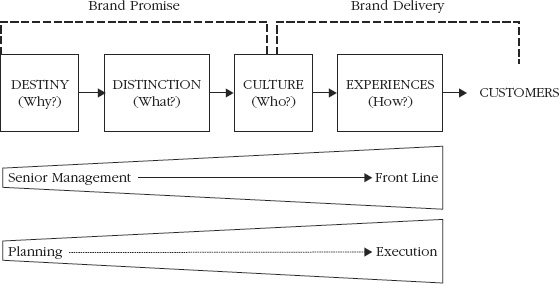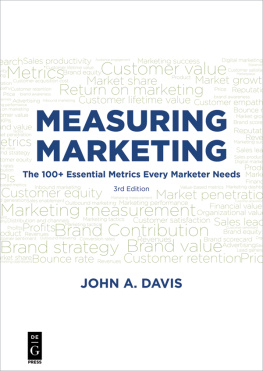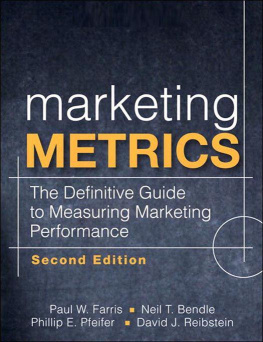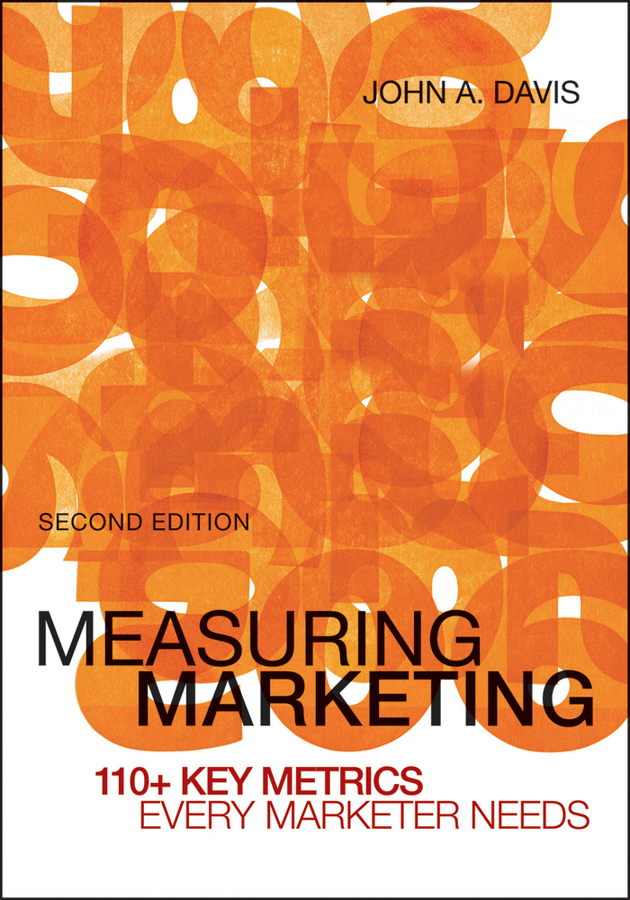Contents

Copyright 2013 by John A. Davis
Published by John Wiley & Sons Singapore Pte. Ltd.
1 Fusionopolis Walk, #0701, Solaris South Tower, Singapore 138628
All rights reserved.
First edition published by John Wiley & Sons Singapore Pte. Ltd. in 2006.
No part of this publication may be reproduced, stored in a retrieval system, or transmitted No part of this publication may be reproduced, stored in a retrieval system, or transmitted in any form or by any means, electronic, mechanical, photocopying, recording, scanning, or otherwise, except as expressly permitted by law, without either the prior written permission of the Publisher, or authorization through payment of the appropriate photocopy fee to the Copyright Clearance Center. Requests for permission should be addressed to the Publisher, John Wiley & Sons Singapore Pte. Ltd., 1 Fusionopolis Walk, #0701, Solaris South Tower, Singapore 138628, tel: 6566438000, fax: 6566438008, e-mail: .
Limit of Liability/Disclaimer of Warranty: While the publisher and author have used their best efforts in preparing this book, they make no representations or warranties with respect to the accuracy or completeness of the contents of this book and specifically disclaim any implied warranties of merchantability or fitness for a particular purpose. No warranty may be created or extended by sales representatives or written sales materials. The advice and strategies contained herein may not be suitable for your situation. You should consult with a professional where appropriate. Neither the publisher nor the author shall be liable for any damages arising herefrom.
Other Wiley Editorial Offices
John Wiley & Sons, 111 River Street, Hoboken, NJ 07030, USA
John Wiley & Sons, The Atrium, Southern Gate, Chichester, West Sussex, P019 8SQ, United Kingdom
John Wiley & Sons (Canada) Ltd., 5353 Dundas Street West, Suite 400, Toronto, Ontario, M9B 6HB, Canada
John Wiley & Sons Australia Ltd., 42 McDougall Street, Milton, Queensland 4064, Australia
Wiley-VCH, Boschstrasse 12, D-69469 Weinheim, Germany
ISBN 9781118153741 (Paperback)
ISBN 9781118153888 (ePDF)
ISBN 9781118153758 (Mobi)
ISBN 9781118153765 (ePub)
To Barb, Kate, Chris, and Bridget... the Journey Continues!
Acknowledgments
I would like to thank the Wiley team for their continued hard work and professionalism in supporting my work over the years (seven books now, including two second editions). Nick Wallwork, Emilie Herman, Gemma Rosey, Jules Yap, Melissa Torra, Sharifah Sharomsah, Paul DiNovo, Stefan Skeen, and David Riedy in Wileys Asia and U.S. offices comprise a terrific global team that continues to enthusiastically support my projects. I know there are other Wiley folks whose names I have inadvertently left out, but I want all of them to know how much I appreciate their efforts.
I am forever thankful to the many faculty and industry colleagues in Asia, Europe, and North America whose work I admire and whose advice I have sought over the years. Here, as well, there are too many to list, but I need to mention a few: David Montgomery, former Dean of the Lee Kong Chian School of Business at Singapore Management University and the Sebastian S. Kresge Professor Emeritus of Marketing at Stanford Business School; Annie Koh, Dean of Executive Education at Singapore Management University; Jin Han, Professor of Marketing at Singapore Management University; Dae Ryun Chang, Professor of Marketing at Yonsei University; Janis Andersen, Dean, School of Communication at Emerson College; Nitish Jain, President of SP Jain School of Global Management; Lynn Kahle, the Ehrman Giustina Professor of Marketing at the Lundquist College of BusinessUniversity of Oregon; Bernd Schmitt, Robert D. Calkins Professor of International Business at Columbia Business School; Glenn Hubbard, Dean and Russell L. Carson Professor of Finance and Economics at Columbia Business School; and Jean-Claude Larreche, Alfred H. Heineken Chair at INSEAD and Founder/CEO of StratX.
The list of industry leaders whose expertise I deeply admire and respect include: David Haigh, Founder/CEO of BrandFinance; Chip Conley, Founder and Chairman of Joie de Vivre Hotels and author of Emotional Equations ; Rod Beckstrom, President and CEO of ICANN and author of The Starfish and the Spider ; Zach Nelson, President and CEO of NetSuite; David Maddocks, former Chief Marketing Officer of Converse; Steve Leonard, President of EMC Asia Pacific/Japan; Brad Gebhard, CEO USA of Hi-Tec; Bill Brown, President and CEO of Harris Corporation; Tom McCabe, Managing Director and Global Head of Transaction Banking at DBS Bank; Kevin Gould, CEO and GM of Chartis China; Brent Smith, Executive Chairman at Vietnam Venture Group; and Ravi Agarwal, Professor of Practice at Nanyang Technological University and former senior executive with Microsoft and Intel.
In the six years since the first book, and several books in between, my family continues to give me the time to pursue these projects. I am exceedingly lucky because their support, love, and humor are my main sources of inspiration, providing me invaluable and immeasurable joy!
Introduction
The first edition of Measuring Marketing was released in 2006 and since that time, many more books on this topic have come to market. There is clearly an appetite in the business world for evaluating the impact of marketing activities. With the rapid rise of social media, marketers now have even more tools to use for engaging with their customers. This second edition is revised and updated, including new chapters on measuring social and digital media. The book has also been reorganized based on the subdisciplines typically performed by marketers.
The measurement of marketing is one of the most important business needs today as companies face increasing pressures to demonstrate financial returns across the organization from shareholders, investors, senior managers, and boards of directors.
A common question asked by senior managers is: What measure can I use to determine if my companys marketing is effective? The answer is that there is no single measure that accomplishes this. Companies develop with their own unique organizational DNA, including vision, strategies, corporate culture, hiring practices, products, and customers. No two companies are identical, even when competing in the same markets with similar products. Relying on industry benchmarks is useful as a starting point, but benchmarks hide the biases arising from competitors that have vastly different cost structures, distribution networks, compensation practices, and even company personalities.
To effectively measure marketing, company management must begin by understanding the context of their business situation. Since a key determinant of business success is acquiring customers, managers must understand this relationship. illustrates the relationship between the company and its customers.
Components of Brand Value
Source: John Davis and Brand New View, INC.

As the diagram indicates, business leaders must have a clear sense of corporate destiny , or vision, which guides the company for the long term. The destiny provides direction for the business, answering the question: Why do we exist? This is then translated into strategies designed to create distinction and unrivaled competitive advantage for the firm, answering the question: What do we do that is unique and adds value? Having a clear understanding of both destiny and distinction helps define how the organization will develop its culture , particularly the talent-development practices that will influence hiring decisions and inspire positive individual and team performance and behaviors. Culture answers the question: Who will be involved in helping us achieve our ambitions? These first three areasdestiny, distinction, and culturecomprise the companys promise to the market (i.e., this is why we exist, this is what we do differently, this is who we are, and this is how we do things). The final area, experiences , emphasizes how the company delivers its offerings to the market, answering the question: How do we create great experiences for our stakeholders? More than products and services, companies are increasingly discovering the importance of providing value-added experiences that connect to customers at multiple points in the market (e.g., products, locations, advertising, social media, events, entertainment, design, service, etc.). Experiences represent the organizations effort to deliver on the promises made.











